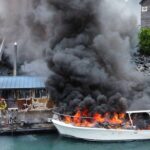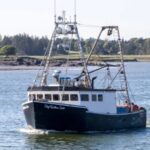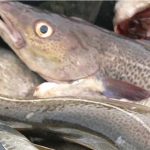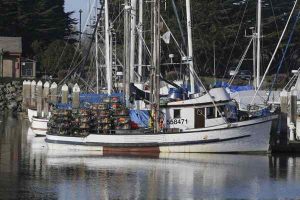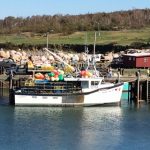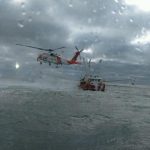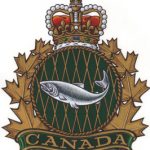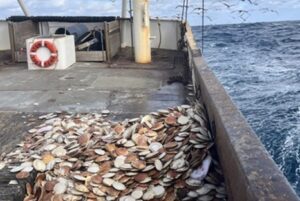Tag Archives: shrimp fishery
Gulf of Mexico Shrimp Fishery to Re-Open Off Texas on July 15, 2024
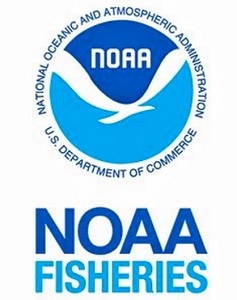 NOAA Fisheries announces federal waters from 9 to 200 nautical miles off Texas will open to shrimp trawling beginning 30 minutes after official sunset, local time, on July 15, 2024, corresponding to the time Texas opens its waters to shrimp trawling. The waters off Texas are closed to shrimp fishing annually to allow brown shrimp to reach a larger and more valuable size prior to harvest, and to prevent waste of brown shrimp that might otherwise be discarded because of their small size. The fishery closed on May 15, 2024. The re-opening date for Texas waters is based on the results of biological sampling by the Texas Parks and Wildlife Department and the assessment of maximum tidal durations. In addition, Texas regulations only allow a 60-day closure; the 60-day period expires July 15, 2024. more, >>CLICK TO READ<< 09:47
NOAA Fisheries announces federal waters from 9 to 200 nautical miles off Texas will open to shrimp trawling beginning 30 minutes after official sunset, local time, on July 15, 2024, corresponding to the time Texas opens its waters to shrimp trawling. The waters off Texas are closed to shrimp fishing annually to allow brown shrimp to reach a larger and more valuable size prior to harvest, and to prevent waste of brown shrimp that might otherwise be discarded because of their small size. The fishery closed on May 15, 2024. The re-opening date for Texas waters is based on the results of biological sampling by the Texas Parks and Wildlife Department and the assessment of maximum tidal durations. In addition, Texas regulations only allow a 60-day closure; the 60-day period expires July 15, 2024. more, >>CLICK TO READ<< 09:47
Federal Waters off Texas Close to Shrimping on May 15, 2024
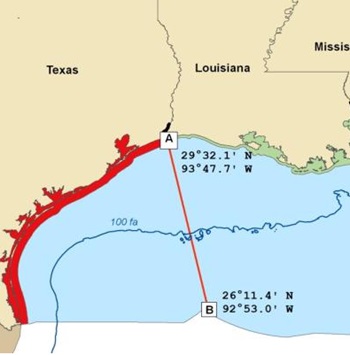 The shrimp fishery is closed annually off Texas to allow brown shrimp to reach a larger and more valuable size prior to harvest, and to prevent waste of brown shrimp that might otherwise be discarded due to their small size. The Texas closure ranges from 45 to 60 days. The closing date is based on catch rates of brown shrimp collected with seine gear by the Coastal Fisheries Division of the Texas Parks and Wildlife Department, mean length of shrimp collected in April, percent of samples containing shrimp, and periods of maximum nocturnal ebb tidal flow. Texas will re-open state waters to shrimp trawling based on sampling projections of when brown shrimp will reach a mean size of 112 mm, and when maximum duration ebb tides will occur. NOAA Fisheries will re-open federal waters off Texas when Texas re-opens its state waters. more, >>CLICK TO READ<< 11:10
The shrimp fishery is closed annually off Texas to allow brown shrimp to reach a larger and more valuable size prior to harvest, and to prevent waste of brown shrimp that might otherwise be discarded due to their small size. The Texas closure ranges from 45 to 60 days. The closing date is based on catch rates of brown shrimp collected with seine gear by the Coastal Fisheries Division of the Texas Parks and Wildlife Department, mean length of shrimp collected in April, percent of samples containing shrimp, and periods of maximum nocturnal ebb tidal flow. Texas will re-open state waters to shrimp trawling based on sampling projections of when brown shrimp will reach a mean size of 112 mm, and when maximum duration ebb tides will occur. NOAA Fisheries will re-open federal waters off Texas when Texas re-opens its state waters. more, >>CLICK TO READ<< 11:10
Scotian Shelf shrimp fishery braces for another cut
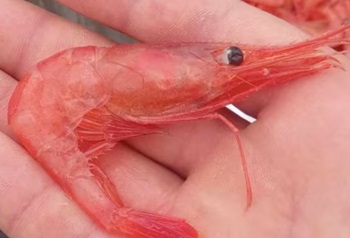 For a third straight year, the shrimp fishery off eastern Nova Scotia is facing a big quota cut with ocean conditions to blame. The recent scientific assessment for northern shrimp on the eastern Scotian Shelf showed environmental factors — including warmer ocean water due to climate change — are contributing to the poor condition of the stock, he says. And the response, he predicts, will be a reduction in the total allowable catch. The Department of Fisheries and Oceans (DFO) is expected to announce the 2024 shrimp quota in several weeks. more, >>click to read<< 10:59
For a third straight year, the shrimp fishery off eastern Nova Scotia is facing a big quota cut with ocean conditions to blame. The recent scientific assessment for northern shrimp on the eastern Scotian Shelf showed environmental factors — including warmer ocean water due to climate change — are contributing to the poor condition of the stock, he says. And the response, he predicts, will be a reduction in the total allowable catch. The Department of Fisheries and Oceans (DFO) is expected to announce the 2024 shrimp quota in several weeks. more, >>click to read<< 10:59
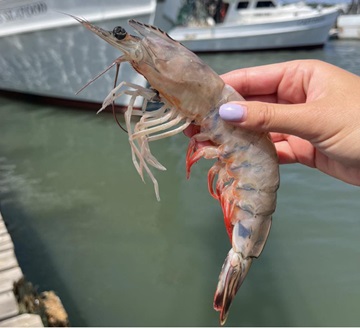
‘Catastrophic crisis’: Imported shrimp flood US market
Foreign shrimp imports are overwhelming the country’s inventories of shrimp and driving market prices for locally sourced shrimp to record lows, prompting widespread calls from elected officials and organizations throughout southern Atlantic and Gulf Coast states for the federal government to declare a fishery resource disaster. Governors of coastal states from North Carolina to Florida to Texas are being pressed to ask U.S. Commerce Secretary Gina Raimondo to determine a fishery resource disaster for the South Atlantic and Gulf of Mexico shrimp fishery. In what one North Carolina coastal county’s board of commissioners refer to as an “unprecedented catastrophic crisis,” shrimpers are struggling to maintain operations because they’re making substantially less for their catch while paying historically high fuel prices and other inflation-driven costs. Shrimpers are also being forced to dock their freezer boats, or vessels with onboard freezers, because they can’t move their product in a market flooded with frozen shrimp from overseas. >>click to read<< 09:40
Plan to reopen Maine shrimp fishery in the works
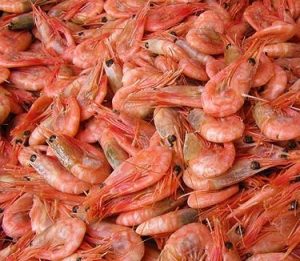 The Atlantic States Marine Fisheries Commission is seeking comment on its plan to reopen the northern shrimp fishery, which has been closed for three years. The Arlington, Va.-based regulatory agency’s plan includes options such as changing the way the quota system is managed. The agency noted that earlier proposals had considered establishing a limited entry program. The current proposal eliminates that option and focuses instead on “total allowable catch allocation programs, gear requirements, and other measures to improve management of the northern shrimp fishery and resource.” continue reading the story click here 21:14
The Atlantic States Marine Fisheries Commission is seeking comment on its plan to reopen the northern shrimp fishery, which has been closed for three years. The Arlington, Va.-based regulatory agency’s plan includes options such as changing the way the quota system is managed. The agency noted that earlier proposals had considered establishing a limited entry program. The current proposal eliminates that option and focuses instead on “total allowable catch allocation programs, gear requirements, and other measures to improve management of the northern shrimp fishery and resource.” continue reading the story click here 21:14
ASMFC scientists conclude Maine’s shrimp fishery should stay shut down
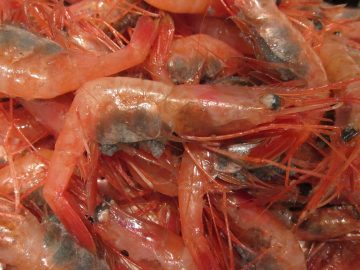 A scientific committee says Maine’s shuttered cold water shrimp fishery should stay shut down for at least another year. The shrimp fishery has been shuttered since the end of 2013 because of low populations. Scientists say warming ocean temperatures off New England are inhospitable for the shrimp. The Atlantic States Marine Fisheries Commission says a scientific committee that studies the shrimp reports the species still faces “poor prospects for the near future.” The committee is recommending the commission extend the moratorium on fishing for the shrimp through 2017. An arm of the Atlantic States that deals with Maine shrimp will meet to make a decision about the coming fishing year on Nov. 10 in Portsmouth. link 15:53
A scientific committee says Maine’s shuttered cold water shrimp fishery should stay shut down for at least another year. The shrimp fishery has been shuttered since the end of 2013 because of low populations. Scientists say warming ocean temperatures off New England are inhospitable for the shrimp. The Atlantic States Marine Fisheries Commission says a scientific committee that studies the shrimp reports the species still faces “poor prospects for the near future.” The committee is recommending the commission extend the moratorium on fishing for the shrimp through 2017. An arm of the Atlantic States that deals with Maine shrimp will meet to make a decision about the coming fishing year on Nov. 10 in Portsmouth. link 15:53
Ministers divided over panel recommendation for northern shrimp fishery
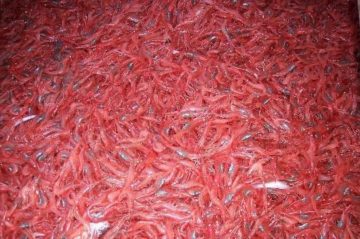 Nova Scotia Fisheries Minister Keith Colwell said he’s disappointed with the recommendation and is drafting a letter for federal Fisheries Minister Dominic LeBlanc to reiterate his views. Newfoundland and Labrador Fisheries Minister Steve Crocker said the current policy is unfair.A federal panel decision that recommends scrapping a northern shrimp policy that protects the pioneers of the multi-million dollar industry is dividing fisheries ministers in two Atlantic provinces. Under the current Last-In, First-Out policy, the last entrants to a fishery off Newfoundland and Labrador are the first to leave when a quota is cut. But the report released this week from an independent panel reviewing the policy said it does not allow the industry to adjust to changes in shrimp stocks, which have been in decline. The report recommends replacing the policy with an allocation regime that would include proportional shares in fishing areas. Read the rest here 17:02
Nova Scotia Fisheries Minister Keith Colwell said he’s disappointed with the recommendation and is drafting a letter for federal Fisheries Minister Dominic LeBlanc to reiterate his views. Newfoundland and Labrador Fisheries Minister Steve Crocker said the current policy is unfair.A federal panel decision that recommends scrapping a northern shrimp policy that protects the pioneers of the multi-million dollar industry is dividing fisheries ministers in two Atlantic provinces. Under the current Last-In, First-Out policy, the last entrants to a fishery off Newfoundland and Labrador are the first to leave when a quota is cut. But the report released this week from an independent panel reviewing the policy said it does not allow the industry to adjust to changes in shrimp stocks, which have been in decline. The report recommends replacing the policy with an allocation regime that would include proportional shares in fishing areas. Read the rest here 17:02
Ottawa to temporarily suspend LIFO policy, shrimp fishery in Area 6 to be temporarily suspended
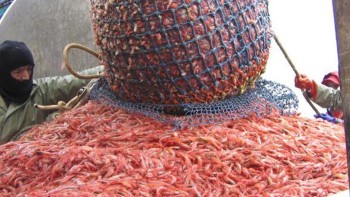 A significant fisheries announcement is set to be made Tuesday that will see the “last in, first out” (LIFO) policy in the shrimp fishery temporarily suspended by the federal government. A seven-person panel will be appointed to study that policy that has come under heavy criticism from local politicians and fishermen, who say it unfairly hinders small inshore boats because they were last to enter the fishery. The shrimp fishery in areas four and five will continue as planned, but area six — off southern Labrador and northern Newfoundland — will be suspended pending the panel’s report. Read the rest here 08:42
A significant fisheries announcement is set to be made Tuesday that will see the “last in, first out” (LIFO) policy in the shrimp fishery temporarily suspended by the federal government. A seven-person panel will be appointed to study that policy that has come under heavy criticism from local politicians and fishermen, who say it unfairly hinders small inshore boats because they were last to enter the fishery. The shrimp fishery in areas four and five will continue as planned, but area six — off southern Labrador and northern Newfoundland — will be suspended pending the panel’s report. Read the rest here 08:42
Labrador shrimp fishery seeing boon from rising ocean temperatures
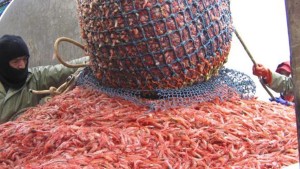 A journalist who covers the seafood industry says global warming may be wreaking havoc on the world’s fish stocks as a whole, but could be related to bigger shrimp catches recently off the coast of Labrador. John Sackton is the publisher of SeafoodNews.com, a website that claims to be the most widely-read daily seafood publication in North America. He told CBC Radio’s Labrador Morning that this past year has been a boon for Labrador’s shrimp fishery. Read the article here 08:11
A journalist who covers the seafood industry says global warming may be wreaking havoc on the world’s fish stocks as a whole, but could be related to bigger shrimp catches recently off the coast of Labrador. John Sackton is the publisher of SeafoodNews.com, a website that claims to be the most widely-read daily seafood publication in North America. He told CBC Radio’s Labrador Morning that this past year has been a boon for Labrador’s shrimp fishery. Read the article here 08:11
Angry fishermen protest outside DFO offices in N.L.
 Angry fishermen held demonstrations in several locations in Newfoundland and Labrador on Wednesday, to protest cuts to shrimp quotas. The department says the reductions are needed to conserve shrimp stocks. The FFAW has said the cut will affect about 1,500 fishermen, nearly all of whom live in rural Newfoundland and Labrador. Read more here 16:24
Angry fishermen held demonstrations in several locations in Newfoundland and Labrador on Wednesday, to protest cuts to shrimp quotas. The department says the reductions are needed to conserve shrimp stocks. The FFAW has said the cut will affect about 1,500 fishermen, nearly all of whom live in rural Newfoundland and Labrador. Read more here 16:24
The End of the U.S. Shrimping Industry – Execution by Electrocution? Public comments end 3/31/14
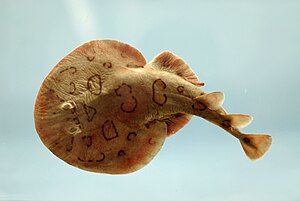 In 2010, WildEarth Guardians petitioned the National Marine Fisheries Service (NMFS) to list the lesser electric ray (also commonly called the Caribbean electric ray) under the ESA, but that petition was denied in a 90-day finding in March 2011. If the lesser electric ray is listed under the ESA, it could mean the end of shrimp fishing as we know it throughout the ray’s range, which includes all the Gulf states, as well as states along the east coast from Florida to North Carolina. Read more here thegoodcatchblog 23:17
In 2010, WildEarth Guardians petitioned the National Marine Fisheries Service (NMFS) to list the lesser electric ray (also commonly called the Caribbean electric ray) under the ESA, but that petition was denied in a 90-day finding in March 2011. If the lesser electric ray is listed under the ESA, it could mean the end of shrimp fishing as we know it throughout the ray’s range, which includes all the Gulf states, as well as states along the east coast from Florida to North Carolina. Read more here thegoodcatchblog 23:17

































